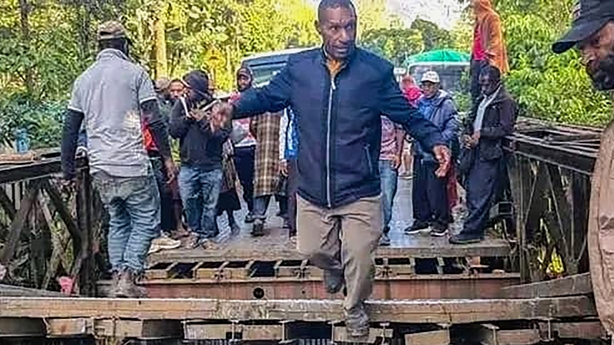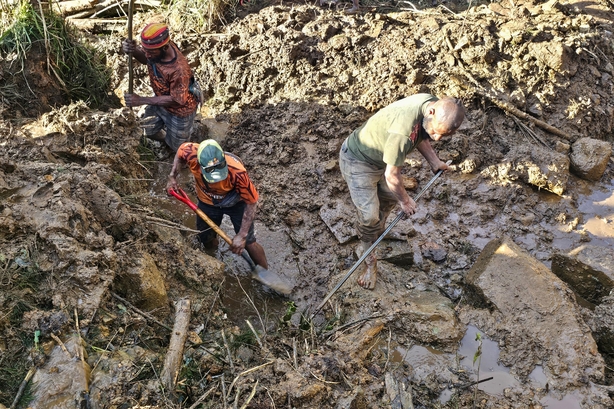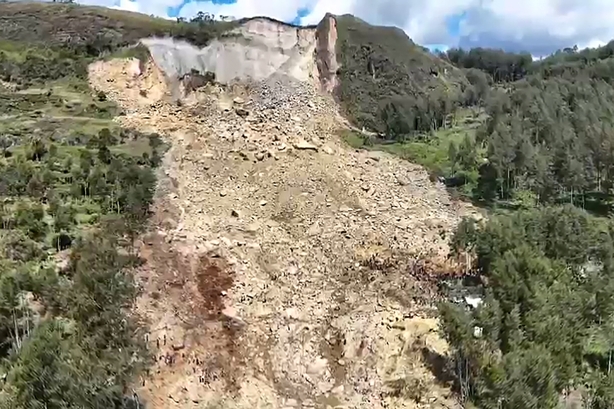Survivors of a deadly Papua New Guinea landslide face a "significant risk of disease outbreak" and are yet to receive sufficient food and clean water supplies, said a United Nations agency.
Six days after a mountainside community was buried in a sea of soil, boulders and debris, the United Nations' migration agency said water sources had become tainted, and the risk of disease was soaring.
Much of the area's water flows through the landslide site, now a 600-metre-long graveyard.
"The creeks now flowing from the debris are contaminated, posing a significant risk of disease outbreak" the UN's migration agency told partners in a rapid assessment report.
"There are no methods being used to treat the water to make it safe for drinking," it said, warning of diarrhoea and malaria.
For much of the past week, residents of Yambeli and Lapak wards have been digging through countless tonnes of earth in the search for buried relatives.
Local officials said between six and 11 bodies had been recovered.

Getting clean water, purification tablets and "lifesaving food supplies" to the site were listed as top priorities by the UN's International Organization for Migration (IOM).
The landslide also severed the main road to and from the community, and the link has yet to be cleared.
The confirmed death toll is expected to rise significantly once heavy machinery arrives and works through the disaster zone, which measures 90,000 square metres.
Enga provincial administrator Sandis Tsaka said it has not been possible to get such machinery, engineers or technical offers to the site yet "because of the risk of unstable land movement".
Officials are still trying to pinpoint how many people are buried under parts of a mountain which collapsed onto the Yambali village in the Enga region around 3am local time last Friday.

Aid agencies and foreign donors are also concerned that unreliable estimates about the number of dead, injured and displaced are complicating the international response.
"The absence of accurate and timely information on the affected areas and population hinders effective planning and delivery of humanitarian assistance," the IOM warned.
Without a current census – the last credible one was done in 2000 – officials are relying on incomplete voter records and checks with local leaders to reach an estimate on total deaths.
More than 2,000 people may have been buried alive, according to the PNG government. A UN estimate put the death toll at around 670, while a local businessman and former official told Reuters it was closer to 160.
Tsaka, the Enga provincial administrator, said that the number of dead was probably in the "hundreds" rather than thousands.
He said traumatised survivors have been unable to provide reliable information on loved ones who are still missing.
"Response teams are starting to gather information - who was there, and the number of people impacted," said Tsaka, who hoped to have initial figures confirmed late Friday.
With some key teams still struggling to reach the disaster zone, he said Papua New Guinea's response workers were "keeping our heads above water".

Thousands of residents are on alert for potential evacuation in case the landslide shifts further downhill.
"We are not even sleeping at night. We are afraid that more of the mountain will fall down and kill us all," 20-year-old resident Frida Yeahkal told Reuters.

